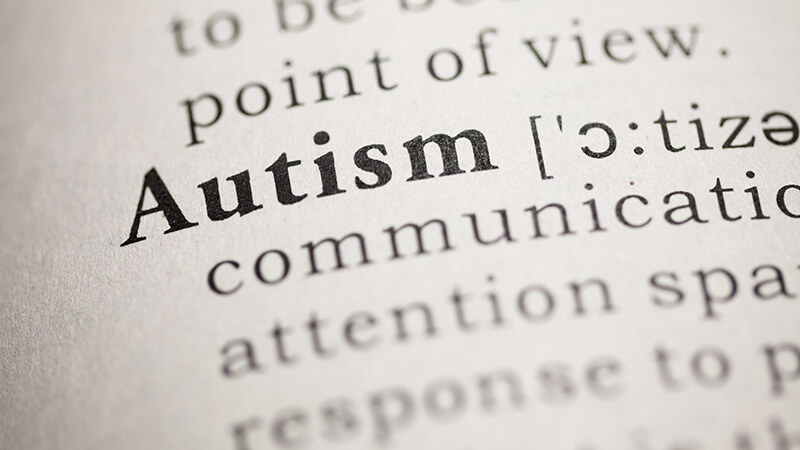When discussing employment challenges, one of the most overlooked groups is individuals on the autism spectrum. Autism employment rates remain alarmingly low despite significant advancements in understanding autism and promoting workplace diversity. Let’s uncover seven shocking truths about autism employment rates and explore why systemic changes are long overdue.

1. Staggering Unemployment Rates
While employment rates have risen in many marginalized communities, adults with autism continue to face stark disparities. Studies show that only about 14-29% of autistic adults are employed, with many of these positions being part-time or low-wage jobs. Comparatively, the general population’s employment rate far exceeds this figure, highlighting a significant gap in inclusion.
This issue isn’t due to a lack of ability. Autistic individuals possess unique skills and perspectives that are highly valuable in many industries. However, barriers such as biases in hiring practices, lack of workplace accommodations, and inadequate support systems perpetuate this alarming disparity.
2. Overqualification and Underemployment
It’s not uncommon for autistic individuals to hold degrees, certifications, or advanced skills in fields like technology, science, and the arts. Despite this, many are employed in roles far below their qualifications. This phenomenon, known as underemployment, reflects a broader issue of employers underestimating the capabilities of autistic professionals.
Employers often focus on perceived limitations rather than strengths, leading to mismatched roles that fail to utilize the full potential of autistic employees. Breaking this cycle requires fostering a strengths-based approach in hiring and team management.
3. The Role of Social Challenges
Social communication challenges are often cited as a barrier to employment for individuals with autism. Many workplaces rely heavily on traditional interview processes, which prioritize verbal communication, eye contact, and the ability to “sell” oneself. These processes disadvantage autistic candidates who may excel in technical skills but struggle with conventional social cues.
Adopting alternative hiring practices, such as skills-based assessments or trial work periods, can help level the playing field and highlight an individual’s true abilities.
4. Workplace Accommodations Are Rarely Provided
One of the most surprising truths about autism employment rates is the lack of accommodations offered in the workplace. Simple adjustments, such as providing noise-canceling headphones, flexible work hours, or a quiet workspace, can significantly enhance productivity and comfort for autistic employees. Yet, many employers either fail to offer these accommodations or are unaware of their necessity.
The lack of accommodations is not only detrimental to autistic employees but also a missed opportunity for companies to benefit from their unique talents. Education and training for employers can help bridge this gap.
5. Misconceptions About Productivity
A prevalent stereotype is that autistic individuals are less productive or incapable of handling high-pressure tasks. This misconception is far from the truth. Many autistic adults excel in areas requiring attention to detail, pattern recognition, and creative problem-solving—skills that are highly sought after in industries like data analysis, programming, and engineering.
In fact, studies have shown that when provided with the right environment and support, autistic employees often outperform their neurotypical peers in specific tasks. Recognizing and leveraging these strengths can lead to mutual benefits for both employees and organizations.
6. The Financial Impact of Unemployment
The low autism employment rates have far-reaching consequences beyond the individual. For autistic adults, unemployment often leads to financial dependency, limited access to healthcare, and reduced quality of life. On a societal level, this translates to increased reliance on government assistance programs and a loss of economic productivity.
By investing in inclusive employment strategies, governments and organizations can not only improve the lives of autistic individuals but also reduce the financial burden on social systems. Inclusion is not just a moral imperative—it’s an economic one.
7. Inclusive Workplaces Are Still the Exception, Not the Rule
Despite growing awareness of autism and neurodiversity, truly inclusive workplaces remain rare. Tokenism—hiring individuals from marginalized groups without offering meaningful roles or growth opportunities—is still a significant issue. Moreover, many workplaces lack proper training to support neurodiverse employees, perpetuating a cycle of exclusion.
To create lasting change, companies must move beyond symbolic gestures and commit to fostering genuinely inclusive environments. This involves revising hiring practices, implementing comprehensive diversity training, and creating mentorship programs tailored to autistic employees.
Why Change Is Overdue
The challenges surrounding autism employment rates are complex, but they are not insurmountable. Change is overdue because:
- The Talent Pool Is Being Wasted: Every individual has the potential to contribute meaningfully to society. The current system squanders the skills and talents of millions of autistic adults, depriving industries of valuable contributions.
- Diversity Drives Innovation: Research consistently shows that diverse teams perform better, generate more innovative ideas, and solve problems more effectively. Including autistic individuals in the workforce enhances this diversity and fosters creative solutions.
- It’s a Matter of Equity: Equal access to employment is a fundamental right. Addressing the systemic barriers faced by autistic individuals is essential for creating a fairer and more equitable society.
Steps Toward Improvement

Addressing the dismal autism employment rates requires a multifaceted approach:
- Rethink Hiring Practices: Move away from traditional interviews and incorporate skills-based assessments to evaluate candidates more fairly.
- Provide Workplace Training: Educate employers and employees about autism and the benefits of neurodiversity in the workplace.
- Offer Reasonable Accommodations: Simple adjustments can make a significant difference. Employers should consult with autistic individuals to understand their specific needs.
- Promote Awareness Campaigns: Public initiatives can help combat stereotypes and reduce stigma surrounding autism in the workplace.
- Encourage Policy Changes: Governments can incentivize inclusive hiring practices through tax benefits or grants for companies that prioritize neurodiversity.
Conclusion
The shocking truths about autism employment rates highlight a critical area where societal progress has lagged. Autistic individuals deserve equal opportunities to thrive professionally, and the current system must evolve to make this a reality. By embracing inclusive practices and addressing systemic barriers, we can create a world where everyone—regardless of neurological differences—has the chance to succeed.
Change is long overdue, but it’s never too late to start. Together, we can transform workplaces into inclusive environments where all talents are valued and celebrated.
How New Direction For Young Adults Can Help You
At New Direction For Young Adults, we specialize in supporting individuals on the autism spectrum as they navigate the complexities of employment and independent living. Our comprehensive programs are designed to build confidence, enhance life skills, and connect young adults with meaningful career opportunities. By fostering self-advocacy and providing tailored guidance, we help bridge the gap between talent and opportunity.
Whether you’re an employer seeking to create a more inclusive workplace or a young adult ready to embark on your career journey, we’re here to help. With our evidence-based strategies and compassionate support, we’ll empower you to break through barriers and achieve your goals.
Let us help you take the first step toward a brighter, more inclusive future for everyone.



